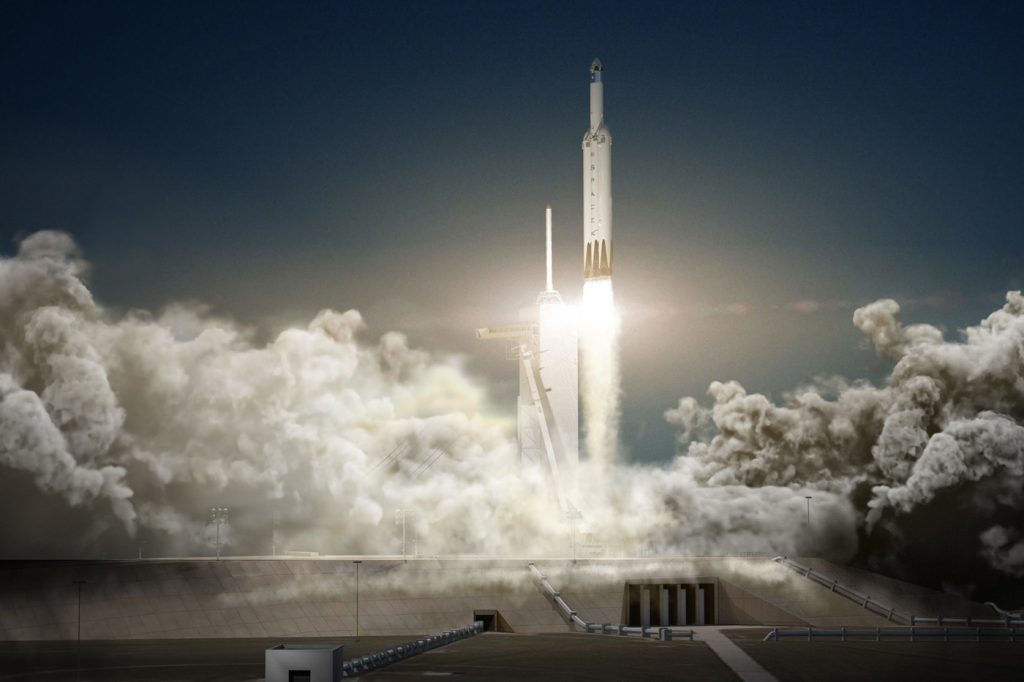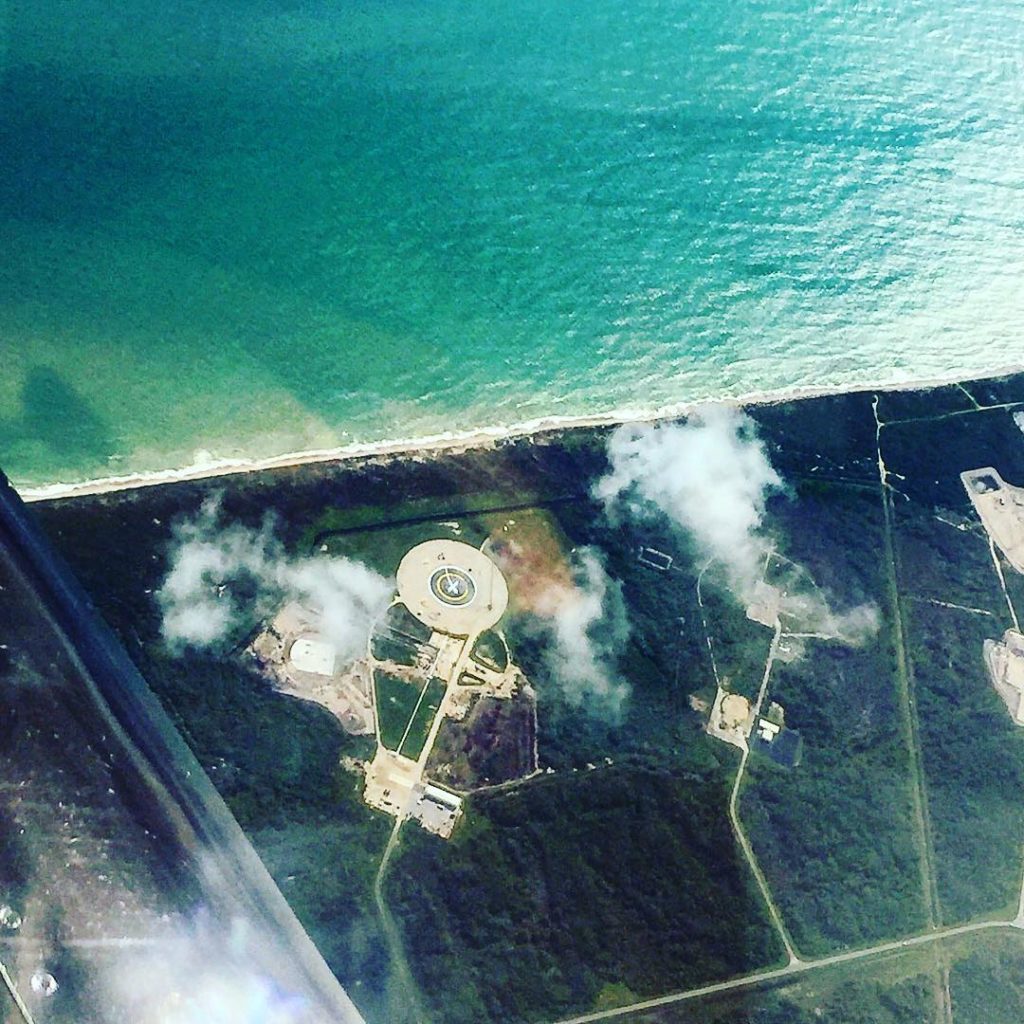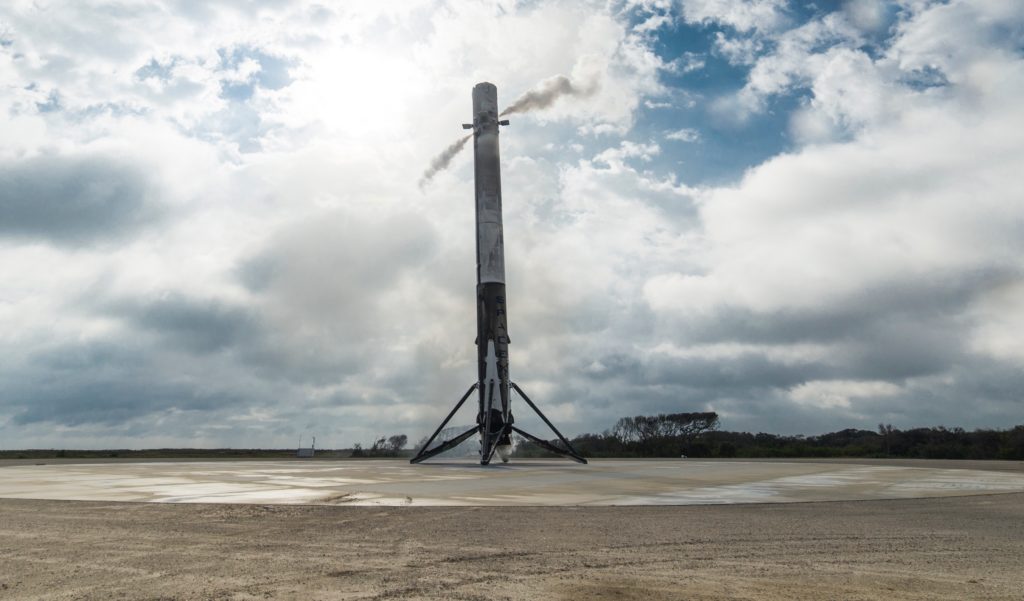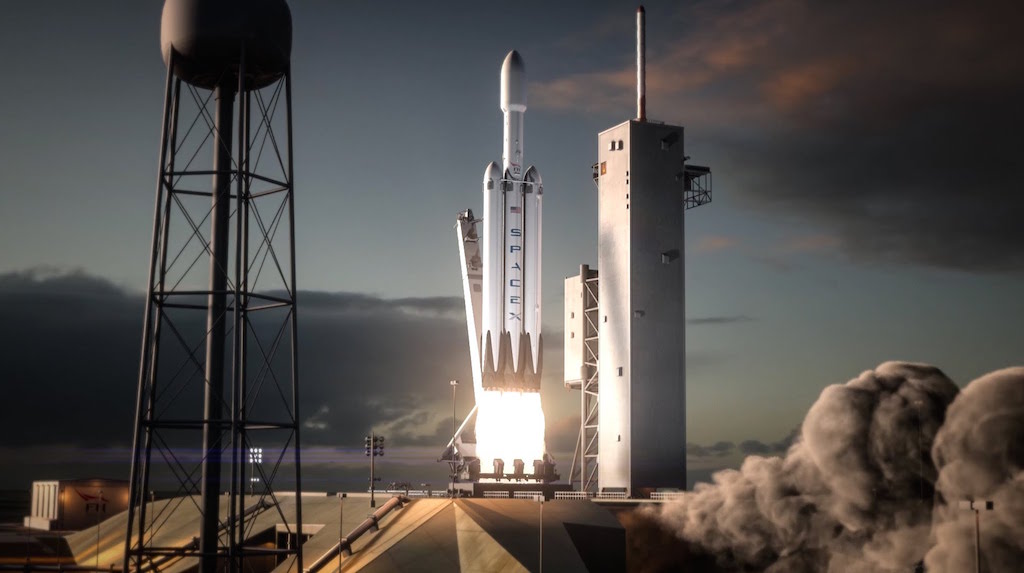
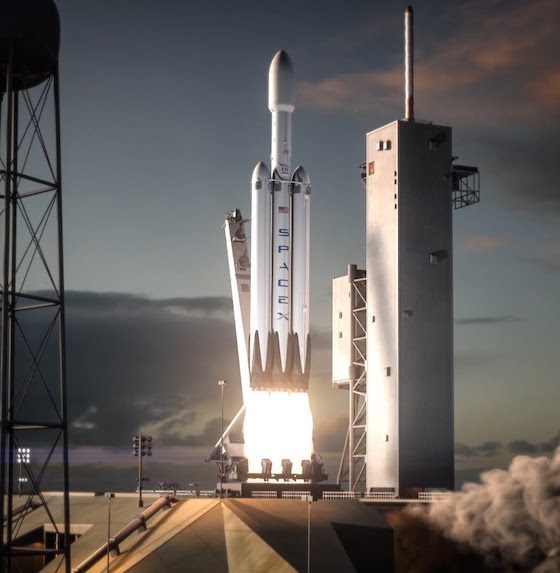
News
SpaceX’s massive Falcon Heavy rocket aims for December 29 inaugural launch
Based on information released by NASASpaceflight.com, a highly reliable source of insider details, SpaceX’s first Falcon Heavy rocket could roll out to the LC-39A launch pad before the end of November, less than a month away. While the first roll-out (or two) will be dedicated solely to “Wet Dress Rehearsals” (WDR), this will be the first time the iconic vehicle makes it to the pad, and will be a historic event regardless of what follows.
No earlier than (NET) “late-November”, the first WDR will see Falcon Heavy go through the usual motions of propellant loading while also conducting an array of systems checks and validations to verify that things are proceeding as expected. This first test will not culminate in any sort of hot-fire, and is more intended to verify that the massive rocket is playing well with the modifications made to the launch pad and the Transporter/Erector/Launcher (TEL) that carries it from the integration facilities to the pad. If major issues come up, they will be dealt with and followed by a second identical WDR. If there are no issues with the first WDR, the second rehearsal could smoothly morph into the first static fire of the integrated vehicle.
As Chris Gebhardt of NSF discusses in some detail, the first Falcon Heavy static fire(s) conducted at LC-39A will be of groundbreaking importance, as SpaceX is currently unable to test fully-integrated Falcon Heavy vehicles at its McGregor, Texas facilities due to the rocket’s sheer power. A lot, thus, rests on these first static fires, currently scheduled to begin around December 15th.
Given the distinctly experimental nature of Falcon Heavy’s inaugural launch, specific dates are best taken as general placemarkers, and the actual dates of the first flow depend entirely upon the tests that precede each subsequent step. Nevertheless, the dates provided by NASASpaceflight point to Falcon Heavy’s first static fire on December 15th, followed two weeks later by a tentative launch date of December 29th.
Staying focused on Mars: Is Falcon Heavy necessary?
Even an uncertain launch date of that specificity is still a historic event for Falcon Heavy, long lampooned and straw-manned as an example of SpaceX’s silly pie-in-the-sky claims and Elon Musk’s oversimplification of complex engineering tasks. There is a grain of truth to such contentions, but they tend to miss the point by huge margins. The actual market for mid-level heavy-lift launch vehicles like Falcon Heavy is quite simply too small to be a major motivator for a commercial launch company like SpaceX. One must remember that SpaceX was not founded to be a run-of-the-mill launch provider. The company’s goal, as has been reiterated ad infinitum, is “enabling human life on Mars”, something that has explicitly prefaced every single job posting on the company’s website for more than half a decade.
For a time, it appeared that Falcon Heavy might eventually be used to enable SpaceX’s Red Dragon program, intended to field-test the technologies needed for month-long cruises in deep space and landing large payloads on Mars. However, the program was cancelled earlier this year, in favor of what Musk called “vastly bigger ships”. Indeed, updated Mars plans unveiled on September 29th showed that SpaceX was forging ahead with an updated BFR and BFS, and hopes to fly its first missions to Mars in 2022.
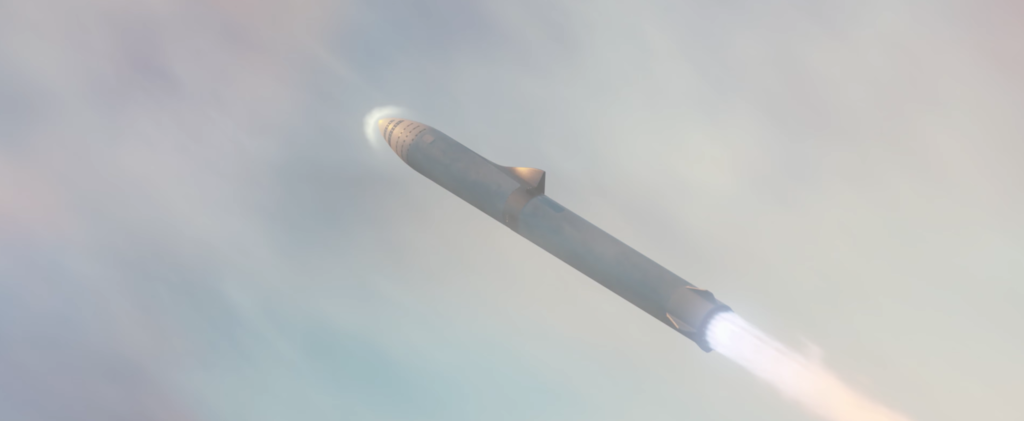
SpaceX’s massive BFR, intended to create and support a human colony on Mars, is visualized taking to the sky. Experience from operating Falcon Heavy will likely benefit BFR once it eventually begins hot-fire testing. (SpaceX)
Falcon Heavy will admittedly become the most powerful operational launch vehicle when it first lifts off in approximately two months, and it will likely retain that title well into 2020, when NASA’s Space Launch System may conduct its first launch. However, regardless of the impressive technological accomplishments it will embody, Falcon Heavy simply is not powerful or affordable enough to ever realistically enable a sustained human presence on Mars. SpaceX does have a small number of customers actively waiting with payloads for Falcon Heavy – its second mission is currently penciled in for June 2018 – and it is reasonable to assume that some or all of those missions will be completed simply out of due diligence. SpaceX may also be motivated to continue the Falcon Heavy program as a possible entrant in a recently-announced USAF competition meant to partially fund the development of multiple US-built heavy-lift launch vehicles.
More simply still, experience derived from igniting and simultaneously operating Falcon Heavy’s 27 Merlin 1D rocket engines will to some extent benefit BFR’s development and operations, as the conceptual vehicle is currently expected to host 31 Raptor engines on its first stage.
- Taken on October 9th by Ted Meyer, this airborne shot shows that LZ-1’s second pad (on the left) is close to completion. (tedwardmeyer/Instagram)
- LZ-1’s operational landing pad has seen hosted multiple successful landings from 2016-2017. (SpaceX)
- The base of the TEL now sports multiple additional launch clamps (large grey protrusions) that will be needed for Falcon Heavy’s three first stage cores. (SpaceX)
Whether Falcon Heavy is to remain a development or production priority for SpaceX after its first several launches is unclear, but the vehicle’s inaugural launch and all subsequent launches are bound to be spectacles to behold. The company’s second Florida-based launch pad, intended to support two simultaneous landings of Falcon Heavy’s side boosters, appears to be nearly complete. At LC-39A, the facility’s TEL already sports major visible modifications necessary for it to operate with Falcon Heavy. All three of the first Heavy’s first stage cores have already completed hot-fire testings in Texas and are now located at Cape Canaveral, awaiting their first integrated tests later this month. Delays to the December 29th launch date are probable, but the various components needed for Falcon Heavy’s first launch have truly come together, and the vehicle’s launch is now simply a matter of “when”. Place your bets!

News
SpaceX shades airline for seeking contract with Amazon’s Starlink rival

SpaceX employees, including its CEO Elon Musk, shaded American Airlines on social media this past weekend due to the company’s reported talks with Amazon’s Starlink rival, Leo.
Starlink has been adopted by several airlines, including United Airlines, Qatar Airways, Hawaiian Airlines, WestJet, Air France, airBaltic, and others. It has gained notoriety as an extremely solid, dependable, and reliable option for airline travel, as traditional options frequently cause users to lose connection to the internet.
Many airlines have made the switch, while others continue to mull the options available to them. American Airlines is one of them.
A report from Bloomberg indicates the airline is thinking of going with a Starlink rival owned by Amazon, called Leo. It was previously referred to as Project Kuiper.
American CEO Robert Isom said (via Bloomberg):
“While there’s Starlink, there are other low-Earth-orbit satellite opportunities that we can look at. We’re making sure that American is going to have what our customers need.”
Isom also said American has been in touch with Amazon about installing Leo on its aircraft, but he would not reveal the status of any discussions with the company.
The report caught the attention of Michael Nicolls, the Vice President of Starlink Engineering at SpaceX, who said:
“Only fly on airlines with good connectivity… and only one source of good connectivity at the moment…”
CEO Elon Musk replied to Nicolls by stating that American Airlines risks losing “a lot of customers if their connectivity solution fails.”
American Airlines will lose a lot of customers if their connectivity solution fails
— Elon Musk (@elonmusk) December 14, 2025
There are over 8,000 Starlink satellites in orbit currently, offering internet coverage in over 150 countries and territories globally. SpaceX expands its array of satellites nearly every week with launches from California and Florida, aiming to offer internet access to everyone across the globe.
Currently, the company is focusing on expanding into new markets, such as Africa and Asia.
News
Tesla Model Y Standard stuns in new range test, besting its Premium siblings
Tesla’s newer vehicles have continued to meet or exceed their EPA estimates. This is a drastic change, as every 2018-2023 model year Tesla that Edmunds assessed did not meet its range estimates.
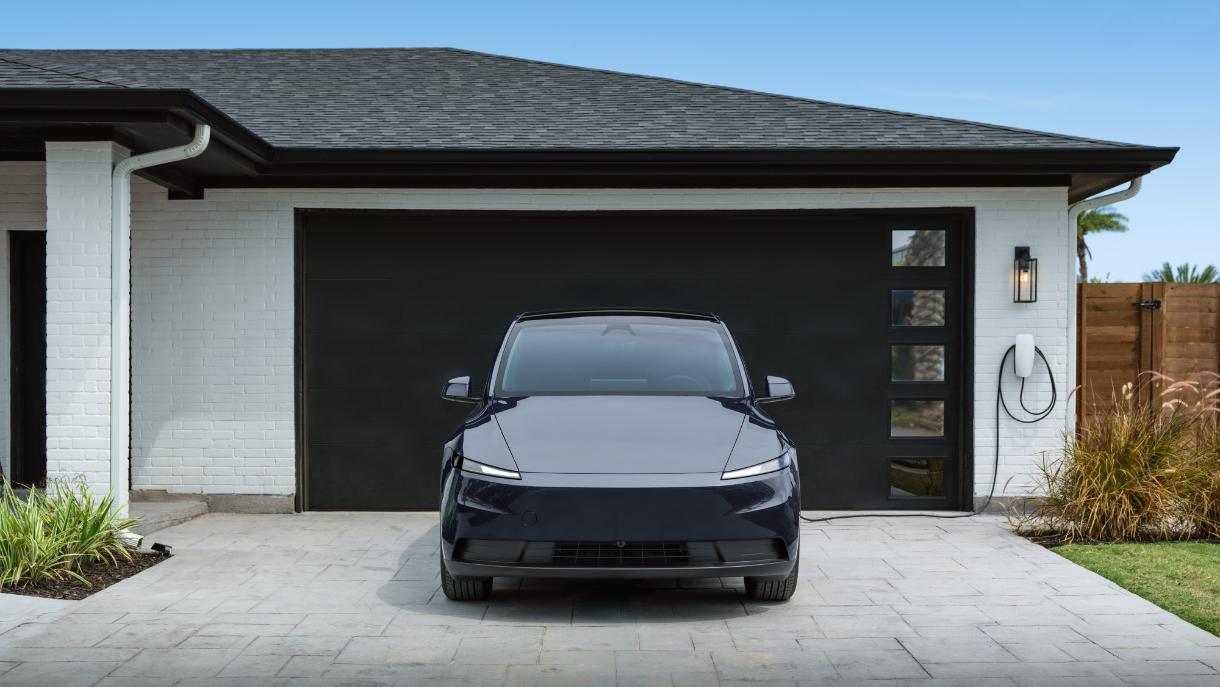
The Tesla Model Y Standard stunned in a new range test performed by automotive media outlet Edmunds, besting all of its Premium siblings that are more expensive and more luxurious in terms of features.
Testing showed the Model Y Standard exceeded its EPA-estimated range rating of 321 miles, as Edmunds said it is the “longest-range Model Y that we’ve ever put on our loop.” In the past, some vehicles have come up short in comparison with EPA ranges; for example, the Model Y’s previous generation vehicle had an EPA-estimated range of 330 miles, but only drove 310.
Additionally, the Launch Series Model Y, the first configuration to be built in the “Juniper” program, landed perfectly on the EPA’s range estimates at 327 miles.
It was also more efficient than Premium offerings, as it utilized just 22.8 kWh to go 100 miles. The Launch Series used 26.8 kWh to travel the same distance.
It is tested using Edmunds’ traditional EV range testing procedure, which follows a strict route of 60 percent city and 40 percent highway driving. The average speed throughout the trip is 40 MPH, and the car is required to stay within 5 MPH of all posted speed limits.
Each car is also put in its most efficient drive setting, and the climate is kept on auto at 72 degrees.
“All of this most accurately represents the real-world driving that owners do day to day,” the publication says.
With this procedure, testing is as consistent as it can get. Of course, there are other factors, like temperature and traffic density. However, one thing is important to note: Tesla’s newer vehicles have continued to meet or exceed their EPA estimates. This is a drastic change, as every 2018-2023 model year Tesla that Edmunds assessed did not meet its range estimates.
Tesla Model Y Standard vs. Tesla Model Y Premium
Tesla’s two Model Y levels both offer a great option for whichever fits your budget. However, when you sit in both cars, you will notice distinct differences between them.
The Premium definitely has a more luxurious feel, while the Standard is stripped of many of the more premium features, like Vegan Leather Interior, acoustic-lined glass, and a better sound system.
You can read our full review of the Model Y Standard below:
Tesla Model Y Standard Full Review: Is it worth the lower price?
News
Xpeng CEO: Tesla FSD 14.2 has developed “near-Level 4” performance
While acknowledging that imperfections remain, the Xpeng CEO said FSD’s current iteration significantly surpasses last year’s capabilities.

Xpeng CEO He Xiaopeng has offered fresh praise for Tesla’s Full Self-Driving (FSD) system after revisiting Silicon Valley more than a year after his first hands-on experience.
Following extended test drives of Tesla vehicles running the latest FSD software, He stated that the system has made major strides, reinforcing his view that Tesla’s approach to autonomy is indeed the proper path towards autonomy.
Tesla FSD closing in on Level 4 driving
During his visit, He test-drove a Tesla equipped with FSD V14.2. He also rode in a Tesla Robotaxi. Over roughly five hours of driving across Silicon Valley and San Francisco, He said both vehicles delivered consistent and reassuring performance, a notable improvement from his experience a year earlier.
According to He, Tesla’s FSD has evolved from a smooth Level 2 advanced driver assistance system into what he described as a “near-Level 4” experience in terms of capabilities. While acknowledging that imperfections remain, the Xpeng CEO said FSD’s current iteration significantly surpasses last year’s capabilities. He also reiterated his belief that Tesla’s strategy of using the same autonomous software and hardware architecture across private vehicles and robotaxis is the right long-term approach, allowing users to bypass intermediate autonomy stages and move closer to Level 4 functionality.
He previously tested Tesla’s FSD V12.3.6 and Waymo vehicles in California in mid-2024, noting at the time that Waymo performed better in dense urban environments like San Francisco, while Tesla excelled in Silicon Valley and on highways.
Xpeng’s ambitious autonomy roadmap and internal challenge
The Silicon Valley visit also served as a benchmark for Xpeng’s own autonomy ambitions. He stated that Xpeng is looking to improve its VLA autonomous driving system to match the performance of Tesla’s FSD V14.2 within China by August 30, 2026. Xpeng is poised to release its VLA 2.0 smart driving software next quarter, though He cautioned that the initial version will not be able to match FSD V14.2’s capabilities, as noted in a CNEV Post report.
He also added a personal twist to the goal, publicly challenging Xpeng’s autonomous driving team. If the performance target is met by the 2026 deadline, the CEO stated that he will approve the creation of a Chinese-style cafeteria for Xpeng’s Silicon Valley team. If not, Liu Xianming, head of Xpeng’s autonomous driving unit, has pledged to run naked across the Golden Gate Bridge, He noted.
